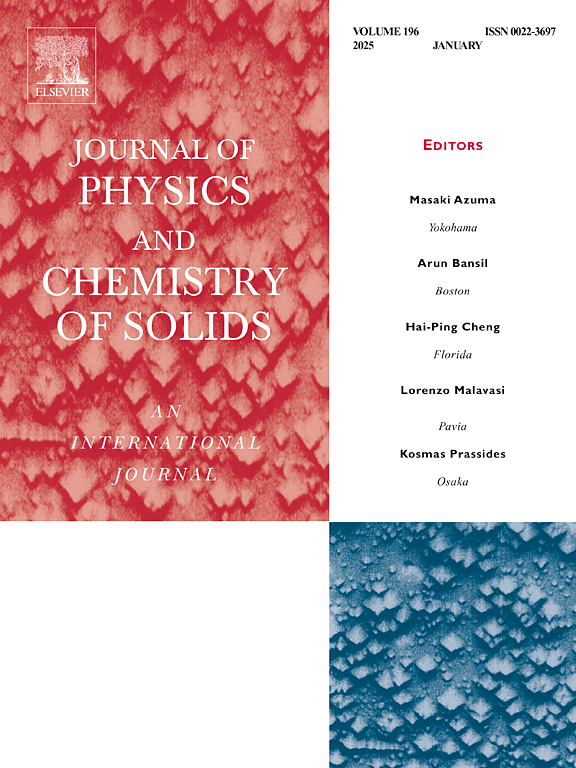Over-room-temperature strain robust half-metallicity and variations in the co-oxidation/spin states in Ni-doped La2FeCoO6
IF 4.3
3区 材料科学
Q2 CHEMISTRY, MULTIDISCIPLINARY
引用次数: 0
Abstract
Half-metals (HM) hold immense potential for applications in modern nanoelectronics devices because of their 100% spin polarization (SP) at the Fermi level (), which allows them to produce purely spin-resolved currents. Herein, the physical features of the LaFeCoO double perovskite oxide are investigated under the consequence of Ni-doping at the Fe/Co/FeCo-site (Ni@Fe/Ni@Co/Ni@FeCo) along with biaxial ([110]) strain using - calculations. The “” values of determined formation enthalpies ensure the thermodynamical stability of the structures. The pristine system is a ferromagnetic semiconductor owing an energy gap () of 2.04 eV. Strikingly, a half-metallic (100% SP) behavior is acquired for all Ni-doped structures, where Ni 3 states significantly facilitate the conductivity of the spin-majority (N) channels. Conversely, the spin-minority (N) channels illustrate an insulating character owing a large of 2.55/1.55/1.82 eV for the Ni@Fe/Ni@Co/Ni@FeCo-doped system, which appears to be sufficient to inhibit spin-flipping and assure an effective spin-filtering response. Surprisingly, Co changes its oxidation state from + 4 (high spin state) to + 3 (intermediate spin state)/+ 3 (high spin state) due to a significant increase in its partial spin moment from 0.32 to 2.0/3.09 in the Ni@Fe/Ni@FeCo-doped system. However, in the Ni@Fe, it remains in + 4 (high spin state) with a spin moment of 0.36 . Moreover, all the structures have above room temperature of 385/366/350/340 K in the pristine/Ni@Fe/Ni@FeCo-doped system, making them highly desirable candidates for device applications. Eventually, the robustness of the FM HM phase of the Ni-doped systems is analyzed, which remains preserved for a reasonable 5% strain. Thus, the present investigation is expected to trigger further experimental research to explore FM HM behavior among various DPOs via the combined influence of electron-doping and strain engineering.
求助全文
约1分钟内获得全文
求助全文
来源期刊
CiteScore
7.80
自引率
2.50%
发文量
605
审稿时长
40 days
期刊介绍:
The Journal of Physics and Chemistry of Solids is a well-established international medium for publication of archival research in condensed matter and materials sciences. Areas of interest broadly include experimental and theoretical research on electronic, magnetic, spectroscopic and structural properties as well as the statistical mechanics and thermodynamics of materials. The focus is on gaining physical and chemical insight into the properties and potential applications of condensed matter systems.
Within the broad scope of the journal, beyond regular contributions, the editors have identified submissions in the following areas of physics and chemistry of solids to be of special current interest to the journal:
Low-dimensional systems
Exotic states of quantum electron matter including topological phases
Energy conversion and storage
Interfaces, nanoparticles and catalysts.

 求助内容:
求助内容: 应助结果提醒方式:
应助结果提醒方式:


